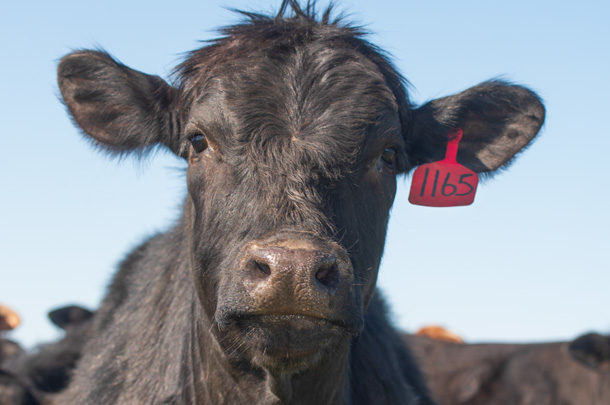Have you ever been pulled over without your ID? If so, it’s likely you know the importance of keeping it on you at all times! Just as it’s important for us, identification is important for cattle, too – for a multitude of reasons.
The importance of proper cattle identification
Proper individual identification of cattle is important for many reasons. Tony Hawkins, a technical service veterinarian with Valley Vet Supply, explained that the most obvious benefit to producers is ensuring the correct animal is caught and addressed after it is deemed necessary to provide treatment or other management practices during routine herd health checks. Knowing individual animal treatment is essential for record-keeping purposes.
“Common variables to track include body condition scoring, calving date, ease of calving, weaning weight and average daily gain [ADG], milk production, vaccination/processing date and products used, and tracking animal health and treatments. These records allow producers to make appropriate management decisions, such as targeted nutrition groups or culling,” says Hawkins.
Importantly, the Beef Quality Assurance (BQA) program places a high emphasis on proper recordkeeping, including individual animal identification, under its recommended best management practices: “This includes identifying each animal treated; accurately recording the treatment, treatment date and treatment dosage; and following prescribed withdrawal times.”
“We all know the importance of adhering to BQA guidelines so we can continue to produce high-quality, safe beef that consumers will trust to feed their families,” Hawkins adds.
Eartag:
A plastic eartag is the most common method of animal identification. There are many options available: color, retention method, numbered versus blank, engravable, electronic identification (EID) – also referred to as radio frequency identification (RFID) – the list goes on, Hawkins outlined.
Eartags work well for any class of cattle because they are convenient, relatively inexpensive and can be read from a distance. The downsides of tags include difficulty in reading them if they get dirty, possibility of falling out and fading over time. It’s common practice for show cattle not to be tagged.

Best practices for applying eartags
- Make sure you have the correct tag applicator. “There are many styles of eartags, and they each have their own applicator,” says Julia Herman, beef cattle specialist veterinarian with the National Cattlemen's Beef Association (NCBA). “Confirm you have the correct applicators for the tag you are using before herd work.”
- “Clean ears are ideal. Placing a tag in a muddy ear could introduce dirt or bacteria into the site. This can cause an infection or abscess, and the tag could fall out later,” explains Herman.
- Place tags into the middle third of the ear; between the upper and lower ribs is the strongest part of the ear. This will prevent tags from being ripped out when cattle end up in the brush or trees.
- RFID tags are easiest when read with a stick reader or wand but can still be read if animals are properly restrained. Wands allow fast reading and data management. Ensure the button is on the inside of the ear and the visual panel is on the outside of the ear when applying.
Tattoo:
“A tattoo makes a permanent form of identification – it is often required for registration with breed associations, so seedstock producers should tattoo their cattle,” recommends Hawkins. “In addition to this, it can make an excellent ‘backup’ form of identification for commercial producers.”
For example, Hawkins shared that if an animal loses its eartag, you can reference the tattoo number and use your records to reapply the correct eartag number. Some downsides of tattoos include the inability to read without restraint, problems with legibility and the time/equipment required to perform the procedure.

Best practices for applying tattoos
- Herman recommends If you have registered cattle, talk with your breed association, and follow their guidelines for tattoos. Work with your veterinarian if you have questions.
- Ensure cattle are properly restrained in a chute (a fitting chute is not recommended.)
- Clean the ear using paper towels or gauze and rubbing alcohol to help avoid infection and potentially spreading a virus from one animal to the next. Alcohol is the recommended disinfectant when tattooing – using soap, iodine or chlorhexidine can cause the tattoo ink to smear and not stick.
- Before tattooing the ear, you can make a test run to ensure proper placement – use the tattoo on thick cardboard to make sure digits line up.
- Herman recommends wearing rubber or disposable gloves when tattooing for biosecurity and to keep hands clean. “My preference is to clean the ear, put the ink directly into the ear where you’ll put the tattoo and firmly close the pliers to press ink into the tissue. Next, I have a toothbrush that I use to rub ink into the tattoo holes. Then, I place the applicator into a cup or bucket with alcohol in it, so it’s disinfected between animals.”
- The tattoo should last years, so make sure you have firm, even pressure when pressing the applicator together on the ear. Apply the tattoo in the unhaired portion of the inner ear away from where hair is growing. The hair follicles will grow where the tattoo was placed, which will cause fading. Producers may need to check back for legibility over time.
Herman encourages producers to always emphasize human safety when tagging or tattooing and working around the heads of these animals. Make sure cattle are restrained appropriately, and if needed, use a halter to help improve safety and placement of the tag and tattoo.
“A well-thought identification program provides the opportunity for producers to keep accurate records, which will ultimately optimize production and profitability,” said Hawkins.






